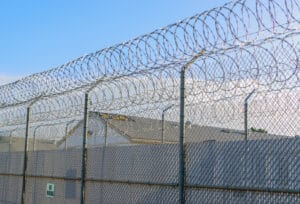Behind Bars: Exploring Life Inside a United States Penitentiary
As we delve into the world of high-security prisons, one institution stands out prominently on the landscape of the United States – the United States Penitentiary. Commonly referred to as a U.S. Penitentiary or federal penitentiary, this facility embodies the epitome of a maximum security prison. Click here serves as a formidable establishment within the American corrections system, housing some of the most dangerous and high-profile offenders in the country. Step by step, we will venture inside this penitentiary, delving into the realities and intricacies that define life within its walls.
History of U.S. Penitentiaries

In the early 20th century, the concept of penitentiaries in the United States shifted towards rehabilitation and deterrence. This led to the establishment of high-security federal penitentiaries aimed at housing the most dangerous and violent offenders. The growth of the U.S. Penitentiary system mirrored societal attitudes towards crime and punishment.
As the United States grappled with rising crime rates and a need for secure incarceration facilities, the construction of maximum security prisons became a priority. U.S. Penitentiaries were designed to isolate inmates from the general population and prevent escape, often utilizing cutting-edge security measures and technology. This marked a significant evolution in the management of convicted criminals.
Today, U.S. Penitentiaries serve as an integral component of the federal correctional system, housing inmates convicted of serious offenses under strict supervision. These facilities are governed by federal regulations and provide a controlled environment for the incarceration and rehabilitation of high-risk individuals. The history of U.S. Penitentiaries reflects the ongoing efforts to balance punishment with rehabilitation in the realm of criminal justice.
Life of Inmates
In a United States Penitentiary, life for inmates is marked by strict routines and schedules. Each day begins early with a morning roll call, followed by breakfast served in the communal dining area. Inmates then engage in various activities such as work assignments or educational programs to pass the time constructively.
Despite the structured environment, inmates often experience feelings of isolation and loneliness. Limited contact with the outside world can take a toll on their mental well-being, leading to increased stress and anxiety. Maintaining connections with family and friends through letters or periodic visitation becomes essential for emotional support and a sense of normalcy.
In a high-security prison setting, safety is a top priority for both inmates and staff. Security measures are stringent, with surveillance cameras, regular searches, and strict monitoring of movements. Inmates must adhere to strict rules and regulations, and any violations can result in disciplinary actions or loss of privileges.
Challenges and Controversies
In high security prisons like the United States Penitentiary , challenges arise from the constant need to maintain order and security among inmates who may be prone to violence and conflict.
One of the ongoing controversies surrounding U.S. Penitentiaries is the issue of overcrowding, leading to strained resources and limited access to rehabilitation programs for inmates seeking to turn their lives around.
Additionally, the use of solitary confinement in maximum security prisons has been a subject of debate, with concerns raised about its long-term impact on inmates' mental health and well-being.